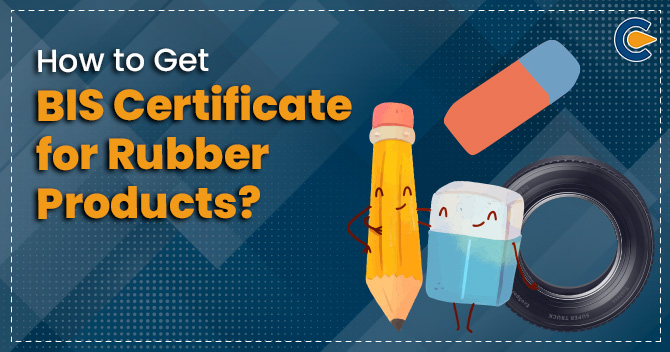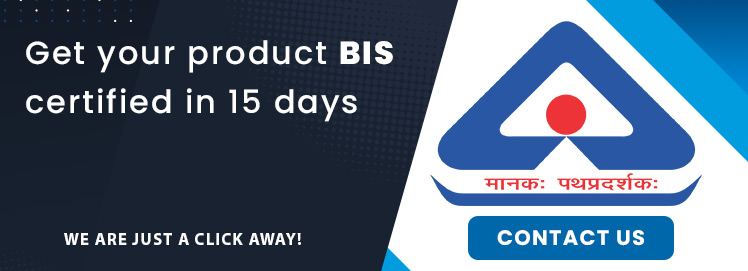There is a growing demand for quality rubber products in domestic and international markets, and BIS certification assures such quality. The BIS (Bureau of Indian Standards) has simplified the process of product certification, and now the process gets completed in very less time. BIS aims to process applications for grants of certificates in 30 days.
In 2016, the BIS was provided with the activities of considering the standardisation and Certificate of products, processes and services. In this blog, we will find out how to get BIS Certificate for rubber products.
List of Rubber Products under BIS
How to get BIS Certificate without knowing the rubber products that need to obtain BIS Certificate. So, here is the list of rubber products is given below:
| List of Rubber products | Indian Standard number |
| All rubber gum boots including ankle boots | IS 5557:2018 |
| Moulded solid rubber soles and heels | IS 5676: 1995 |
| Rubber Hawai chappal | IS 10702: 1992 |
| Slipper, rubber | IS 11544: 1986 |
| Canvas shoe rubber sole | IS 3735:1996 |
| Rubber gasket for pressure cookers | IS 7466:1994 |
| Rubber tubes: moulded or jointed | IS 2415:2015 |
| Rubber hose for Liquified Petroleum Gas (LPG): industrial application | IS 9573:2017 |
| Rubber: raw, natural | IS 4588:1986 |
| Industrial and protective rubber knee | IS 5557:2004 |
| Disposable surgical rubber gloves | IS 13422:1992 |
| Rubber hose for agricultural spraying | IS 1677:2018/ ISO 1401:2016 |
| Latex foam rubber products | IS 1741:2019 |
| Leather safety footwear’s direct moulded rubber sole | IS 11226:1993 |
| High ankle tactical boots with PU-rubber sole | IS 17012:2018 |
| Canvas boot’s rubber sole | IS 3736:1995 |
| Rubber hose textile reinforced for compressed air specification | IS 446:2017 |
| Safety rubber canvas boots for miners | IS 3976:2018 |
| Flexible rubber tubing for LPG | IS 10908:1991 |
| Rubber seal: joint rings for water supply, drainage and sewage pipelines | IS 5382:2018/ISO 4633:2015 |
| Specification for rubber hose for welding | IS 447:1988 |
| Rubber hose for LPG: Domestic and Commercial Application | IS 9573:2017 |
| Transmission belting: friction surface rubber belting | IS 1370:1993 |
| Surgical rubber gloves | IS 4148:1989 |
| Natural rubber compounds: specification for Extruded Products | IS 5192:1994 |
| All rubber gum boots and ankle boots: Occupational purposes | IS 5557:2018 |
| Rubberized coir sheets for cushioning | IS 8391:2019 |
| For rubber hoses, textile-reinforced for general purpose water application | IS 444:2017/ISO 1403:2005 |
| Hospital rubber sheeting without reinforcing fabric | IS 8164:1876 |
| Single-use medical examination gloves made from rubber latex or rubber solution | IS 15354:2018 |
| rubber hoses and hose assemblies for water suction and discharge | IS 3549:2017/ ISO 4641:2010 |
| sheet rubber jointing and rubber insertion Jointing | IS 638:1979 |
| rubber seals for hydraulic gates | IS 15466:2004 |
| hand pump rubber components | IS 15500:2021 |
If one wants to obtain a BIS Certificate for multiple rubber products, then he has to file separate applications for each rubber product.
How to get BIS Certificate for Rubber Products: Documents
The following are the required documents for BIS Certificate for rubber products:
- Factory registration information with proper documents
- Identity Proof of the applicant
- Flow chart of the manufacturing process
- Adequate testing facilities proof
- Quality control parameters and their records
- Details of the authorised signatory and other required documents
- Laboratory testing report and any other information as per the BIS rules and regulations
How to get BIS Certificate for Rubber Products: Procedure
Following are the steps are given by the BIS for obtaining the BIS Certificate for Rubber Products:
Step 1: Go through the Indian Standard
- The first step is to find the relevant Indian Standard for a product category.
- Check whether the product fulfils the norms stated by the Indian Standard and whether the manufacturing unit has proper equipment and test facilities.
- Rubber makers that do not have such testing facilities should visit the BIS-certified labs.
Step 2: selection of appropriate Indian Standard
- While applying for BIS Certificate for rubber products, the applicant must select an appropriate Indian Standard for the product.
- There are two modes of filing the application for the BIS Certificate, normal and simplified procedures.
- The normal procedure enables the applicant to apply for a BIS Certificate without a test report from the BIS-certified labs[1].
- The simplified procedure enables the applicant to submit the test report with the application for BIS Certificate.
Steps 3: Facilitate requested details
- The applicant submits an application for BIS Certificate with the following required details:
- Raw materials
- the manufacturing process and machinery
- Factory location
- Testing personnel
- Plat layout
- The applicant pays the requisite fee along with the application
- In a case where a simplified procedure makes the application, then the applicant provides a simplified procedure as granted by certified labs of BIS.
- The applicant provides details of test equipment with the surety that the test facilities for which subcontracting is not allowed in the scheme of inspection and testing are present in the facility.
- In case of the scheme of inspection and testing or product, a manual is not available for the product and if the applicant intends to be allowed to subcontract any of the tests mentioned in the Indian Standard to a BIS Certified lab instead of establishing the test facility at their own place. The applicant should clarify the lab they intend to subcontract the tests.
Step 4: Concerns raised by BIS
- After successful submission of the application with BIS, the BIS raises any objection.
- The applicant responds to such objections promptly and addresses all the concerns raised by the BIS.
Step 5: Factory Inspection
- The BIS (or any other appropriate authority) proposes a date for inspection.
- The applicant then provides confirmation regarding the inspection date within 10 days from the application’s submission date.
- If the applicant fails to confirm, the BIS Certificate application proceeds for closure or rejection.
- And in such a case, the applicant files a new application.
- Applicants ensure that on the day of inspection, the products that are going to be inspected are available.
- The applicant provides feasible quandaries in testing each variety of rubber products listed under the Indian Standards.
- The BIS underpins the grouping norms to permit the issuance of a license for multiple varieties of rubber products depending upon their testing.
- The applicant makes the production process available along with the production or quality control staff.
- Applicants ensure the availability of the required machinery and testing facility.
- The applicant also ensures the testing of samples by a quality control expert in the presence of BIS personnel and generates a test report.
Step 6: follow up action
- If BIS personnel point out any loophole during the inspection, then he shares the same in the Discrepancy cum Advisory report.
- The BIS personnel, after satisfactory inspection and verification of samples in factory seal samples and counter samples of the items as per the guidelines in the product manual.
Step 7: Issue of Certificate
- After receiving the test report or after inspection (as the case may be) with no action pending, BIS proceeds with the application for issuance of a Certificate for rubber products.
- How to get BIS Certificate without paying off the fee, so the BIS asks the applicant to pay the requisite fee before issuing the Certificate.
- When the applicant makes the payment, the BIS issues the license/certificate for rubber products.
Conclusion
The BIS has simplified the process of obtaining a Certificate for any products falling under Indian Standard. This blog on how to get BIS Certificates has provided thorough knowledge on the process of obtaining a BIS Certificate for rubber products. Every manufacturer intending to manufacture rubber products must have this BIS Certificate. The process is simple, including the testing of products and inspection of the applicant’s premises. If the manufacturer intends to manufacture more rubber products, then he has to apply again for BIS Certificate in a separate application.
Read our Article:What is a CRS Mark on Products?













